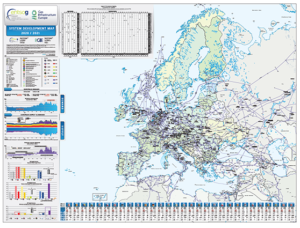- Our DNA
- Innovation Lab
- Publications
- Energy Transparency
- Press Corner
- Events
- Contact
- Subscribe
- Membernet
- My account
- Search
- Follow us at LinkedIn
- Follow us on Twitter
- Follow us on Instagram
January 12, 2022
Find the map in PDF
Ordered the map in hardcopy
Download this Press Release
(Brussels, 12 January 2022)
The 10th edition of the System Development map, illustrating existing and planned gas infrastructure and gas capacities in 2020-2021, was developed by the European Network of Transmission System Operators for Gas (ENTSOG) and Gas Infrastructure Europe (GIE).

This map is updated on a yearly basis and is a widely used reference for European and non-European stakeholders alike. It provides useful, accurate and up-to-date information about the recent gas demand in European countries and the capacities in the European gas infrastructure. Historical demand and supply data are also presented.
Piotr Kuś, ENTSOG General Director, commented, “The System Development Map, which is published jointly by ENTSOG and GIE, provides an easy reference overview of existing gas infrastructure, the outlook for its development, and the supply and demand situation at both the European and national level. As such, it contributes to enhanced transparency, allowing for efficient analysis by market stakeholders and complements the information provided in the ENTSOG Seasonal Supply Reports.”
Boyana Achovski, GIE Secretary General, said: “The data we provide on the EU gas market should be carefully considered: they enable us to assess energy challenges and prevent crises. Our tools support policymakers and market actors who can make enlightened decisions and preventive actions. Information is power, nothing new with that, and we want this power to benefit the whole energy transition and its actors. That’s why we work hard on developing transparency tools.”
ENTSOG and GIE are committed to further enhancing the information provided on the map for future editions and welcome feedback from stakeholders.
Should you require any further information, please contact Jamila Saoudi (+32 2 2090504, Jamila.Saoudi@gie.eu)





































































